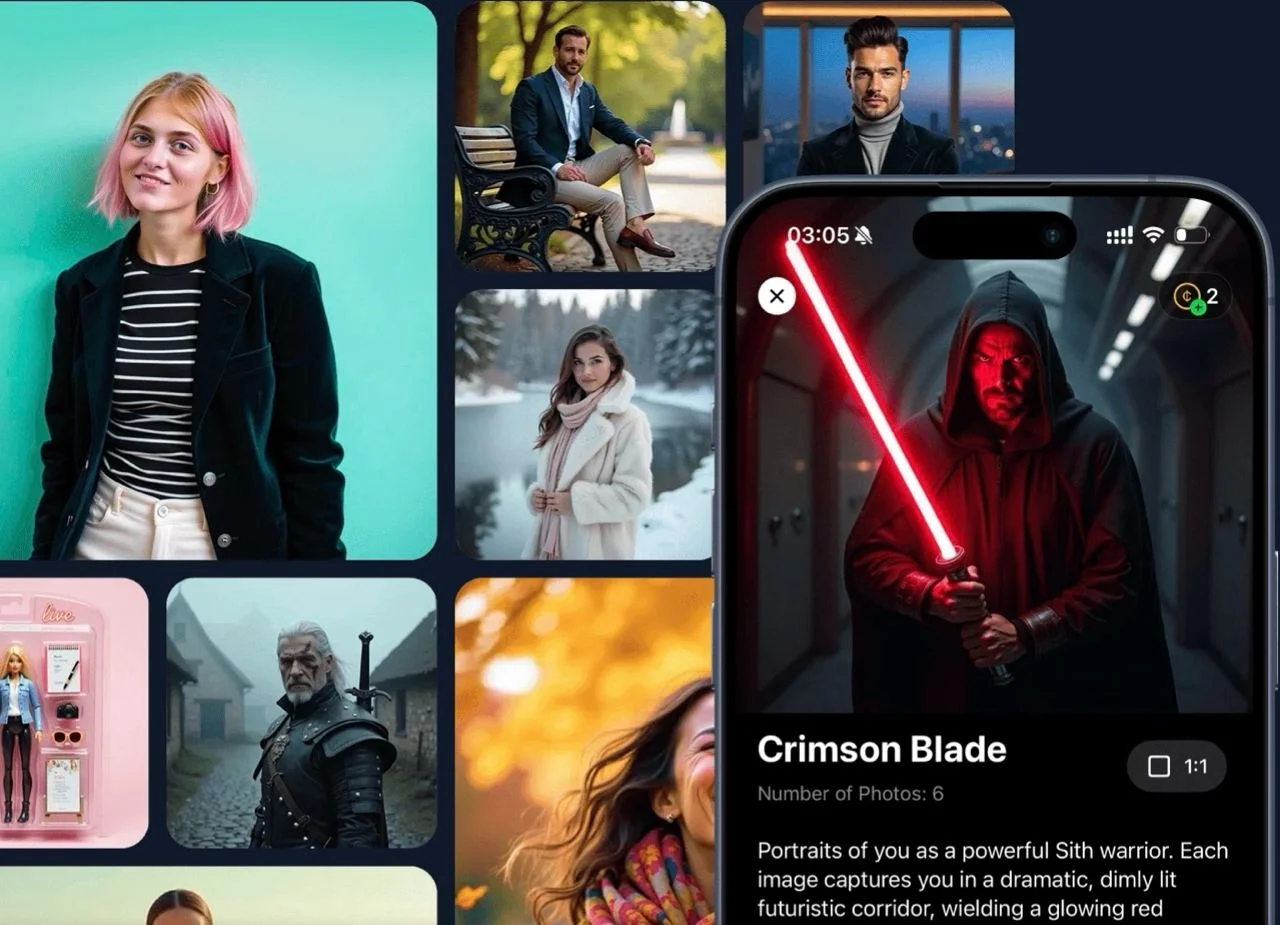A strong portrait does more than fill a square. It sets tone, builds trust, and keeps your brand consistent across LinkedIn, resumes, team pages, and socials. The hold-up has always been time and cost—finding a photographer, picking a backdrop, waiting on edits. AI headshot tools remove that friction. With a small set of selfies and a few taps, you can create studio-style portraits (and short videos) that look clean, natural, and ready to publish.
How modern AI turns selfies into studio results
Good tools don’t just “smooth” a photo. They read face geometry, hair edges, skin texture, and light direction. Then they rebuild the image with balanced lighting, a flattering focal length, and a simple background. Glasses keep real reflections. Skin still shows pores and subtle tone shifts. You end up with a portrait that looks like a fresh capture—not a filter.
Most platforms follow a simple model:
- learn from your sample photos,
- create a reusable “persona” that matches your look, and
- render new images or short clips from that base without another shoot.
A quick workflow that fits real life
You don’t need a studio to get quality inputs. Follow this short setup and you’ll see a jump in output quality:
- Add your photos (8–12 pieces). Use head-and-shoulders shots from different angles. Keep the camera at eye level to avoid distortion.
- Light it right. Bright window light or open shade works best. Avoid harsh sun or overhead office light.
- Keep backgrounds simple. A plain wall beats a busy room and helps with clean hair edges.
- Build your AI persona. The app learns your features and stores a private profile so you can create fresh portraits later without re-uploading.
- Generate. Pick a style (studio gray, soft white, brand color) and tap. Drafts render in seconds.
- Export. Save square for avatars, 4:5 for LinkedIn, vertical for Reels or Shorts, and a transparent-background PNG for design use.
This loop is fast enough to refresh headshots after a haircut, a role change, or before a speaking slot—without calendar drama.
Templates, scenes, and motion—without losing authenticity
Templates solve a common brand problem: consistency. Instead of ad hoc edits, you choose from a small set of prebuilt looks that match your tone—neutral studio, modern office, textured slate, soft color wash. Scene choices add light storytelling for creator bios or personal sites. Keep it subtle. The goal is a clear, human portrait with the brand visible in the background, not the other way around.
Most generators now support micro-motion, too. A gentle head turn, a relaxed smile, or a clean logo reveal turns a still into a 5–8 second intro for LinkedIn features, speaker pages, or social hooks. Small moves read as natural; big, cartoonish motion breaks the spell.
Picking the right tool (and a quick place to vet one)
Feature lists look alike, so judge by output and workflow. You want natural skin, honest likeness, controls for strength and background, high-res exports, and clear privacy terms (where images live, how to delete them, whether your data trains models).
If you want a fast public reference with examples before you try it on your own face, I reviewed a clever AI photo-generator app to check sample styles, device support, and export options. Use listings like that as a starting point, then run a small pilot with five to ten of your photos.
Best practices that keep results real (and useful)
- Aim for “polished,” not “perfect.” Save texture. Keep your actual skin tone. Don’t reshape features.
- Write a one-page style guide if you’re rolling this out for a team: crop (shoulders up), headroom, wardrobe hints (solids, low-glare fabrics), and background set.
- Pick three finals, not thirty. Too many choices stall publishing.
- Store assets cleanly. Use a simple naming rule (Name_Role_YYYYMM) and keep a transparent-background version for design and slides.
- Refresh on a schedule. Every 6–12 months, or after a major role or look change, run a fast update so profiles stay consistent.
Common pitfalls (and easy fixes)
- Waxy skin or glassy eyes? Lower the retouch strength and re-render.
- Odd hair edges? Start with simpler backgrounds; busy scenes confuse the model.
- Harsh shadows? Reshoot inputs near a window with sheer curtains or in open shade.
- Uncanny video motion? Choose micro-movements only—eye contact hold, slight turn, small smile.
Wrap-up: a faster path to a credible image
AI headshot and video tools make professional presentation routine. You control inputs, style, and privacy; the system handles lighting, cleanup, and export. With a short, repeatable workflow, you get portraits that look like you on your best day—camera-ready, brand-aligned, and finished in minutes. That speed matters when a job post goes live, a press request lands, or a site update is due. Less waiting, more publishing, and a digital you that stays consistent wherever people meet your brand.





